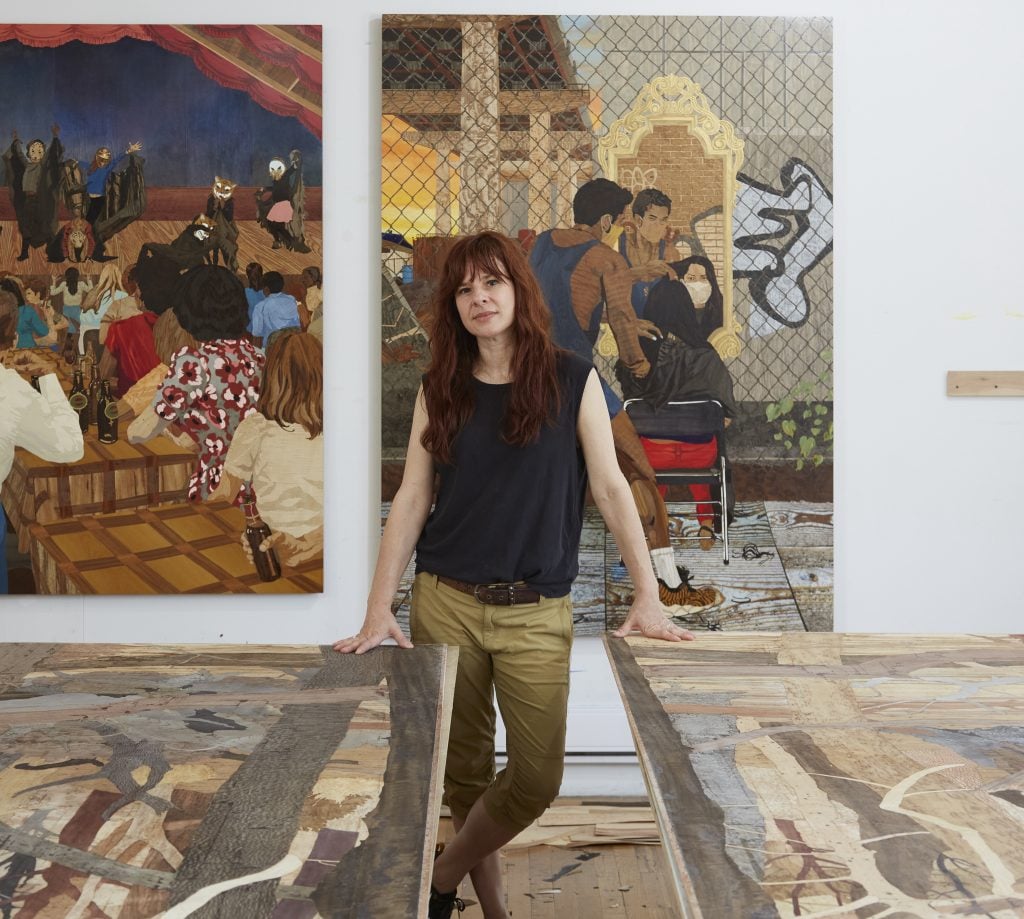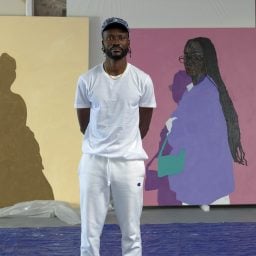Marquetry—the age-old technique of applying small pieces of colored wood to create decorative patterns—is a word that conjures up visions of antique stores and auction house catalogues; it feels like a craft enthused over by connoisseurs, not the makings of contemporary art. Brooklyn-based artist Alison Elizabeth Taylor, however, knows otherwise. Over the years the artist has transformed marquetry into something wholly her own in a signature process that incorporates inlaid wood, painting, and collaged textures.
A native Nevadan and a witness to the boom and bust of Las Vegas, Taylor uses marquetry to create poignant scenes filled with the landscapes and misfit characters of the Southwest. A tension exists on the works’ very surface: the intricacy of the marquetry, associated with the decor of upper-class homes, entices the eye to linger on oft-overlooked subjects. We recently caught up with Taylor in her studio (in a building, her neighbors have told her, that used to be a coffin factory) as she was putting the final touches on “Future Promise“, her forthcoming solo exhibition at New York’s James Cohan Gallery.
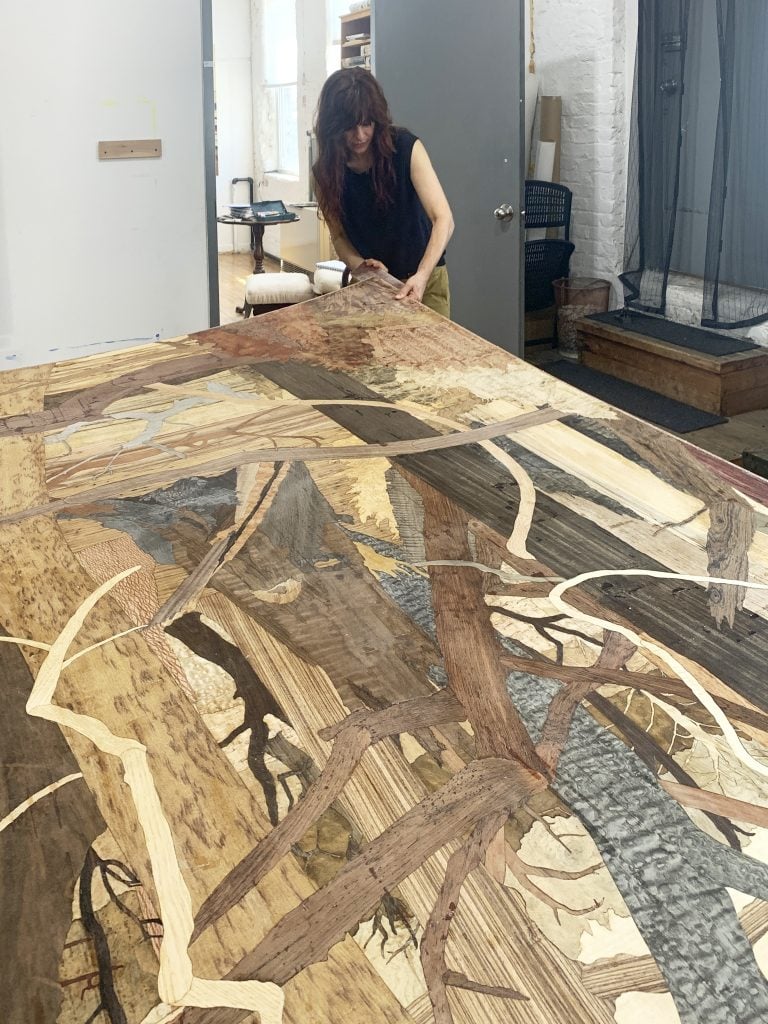
Alison Elizabeth Taylor in her Brooklyn studio. Photo: Vincent Dilio, courtesy of Alison Elizabeth Taylor.
What are the most indispensable items in your studio and why?
I love the MONO Zero eraser. I erase as much as I draw, probably one out of every two marks gets the ax. I’d also be lost without the generic #11 blade in my knife, it allows me to draw with a blade on all kinds of material, like an extension of my hand. Finally, my Epilog laser cutter. It’s only 18 by 12 inches, so I still have to hand-cut larger pieces of wood veneer, but I’ve used it for almost every artwork I’ve made in the last 16 years. At this point it’s like an old car: it breaks, I open it up and tug on a belt, and it’s good to go. It’s actually quite simple technology. Any line I can draw, I can then cut with this tool.
Is there a picture you can send of your work in progress?

A work in progress. Photo: Vincent Dilio, courtesy of Alison Elizabeth Taylor.
What is the studio task on your agenda tomorrow that you are most looking forward to?
Making a cup of coffee when I get in. I try to only have a few sips when I wake up, just enough so that I don’t get a caffeine headache and I can save the buzz part for working. The pacing and maintenance of my coffee addiction are a good distraction. The studio task I’m most looking forward to getting done tomorrow is the glue-up of a marquetry skin. I’ve taped thousands of little pieces of wood veneer together and now I need to glue them to a plywood substrate, which I build into a panel in a second glue-up. It’s a little nerve-wracking as the piece is very brittle; the veneer is 1/32 of an inch thin, and when all taped together it’s like a giant potato chip that is 5 feet wide and 8 feet long. I have to spread just the right amount of glue on the panel, wrap it all in plastic, and put the piece in the vacuum press before the glue starts to set up. I do this part in total silence and try not to forget any of the steps. Painting and adding textures is my favorite part; after the heavy production is done, the possibilities of adding materials to the surface are endless.
What kind of atmosphere do you prefer when you work? Do you listen to music or podcasts, or do you prefer silence? Why?
It depends on what I’m doing that day and how loud the cacophony of self-doubt is in my head. If I need to drown out the voices I’ll listen to the news, but that often backfires, and then I go to music. Santigold is always good for oil painting. Other reliables are Joanna Newsom, Digable Planets, Neutral Milk Hotel, and the I May Destroy You playlist. I’m also looking forward to listening to the next season of the Cocaine and Rhinestones podcast.
Over the last year, I often couldn’t choose what I wanted to listen to in the studio because I had the soundtrack of my kids’ school Zooms, which was pretty surreal. I’m all freshened up on how to do long division with a remainder. One of the teachers was really strict about what went on in the kids’ backgrounds as not to be distracting, and we tried to be cognizant of this. One day movers came to take a painting for a show and when they removed it from the wall, I heard the teacher say, “Now I’m seeing too much movement in your background.”
What trait do you most admire in a work of art? What trait do you most despise?
When a work of art has a meaningful relationship between the subject and the way that it is realized. I love to see complex content rendered in a medium that conveys determined commitment but also a personal viewpoint. I like work that draws from life. I think references to other art and art history are interesting and I enjoy the spark of getting those allusions, but there needs to be more to it. Basically, I want art to create meaning on a few different levels. I love it with people transgress their known discipline and nail it in another medium. That’s a hard bar to reach.
I don’t bother with despising art, it’s just as easy to not look at it. I save all of my despising for the misinformation and corrupt political actors that are prolonging this pandemic.
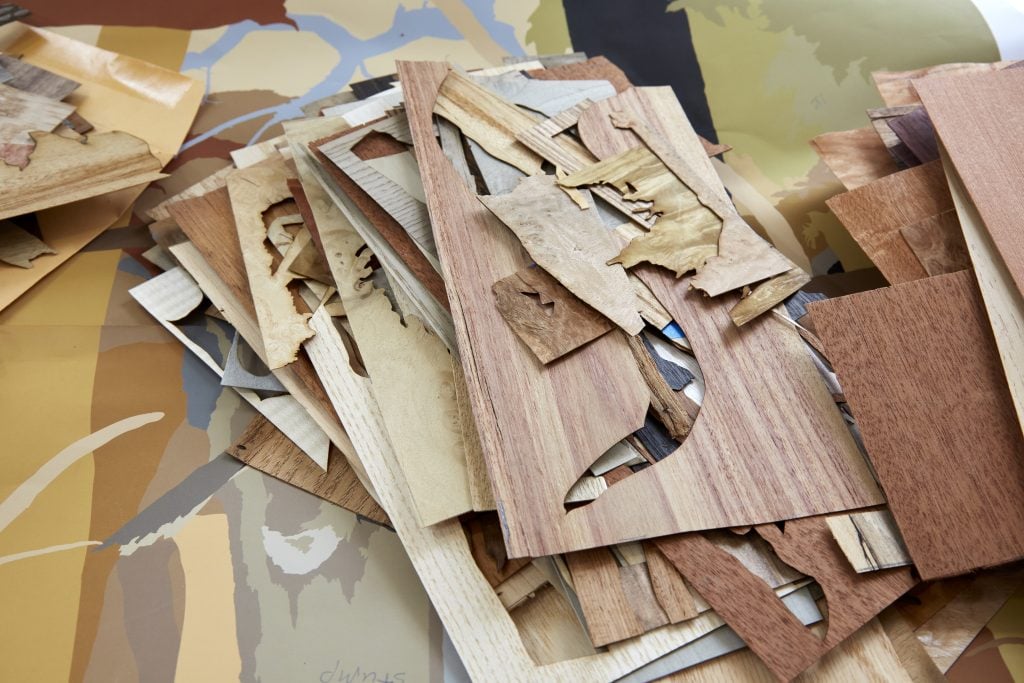
Photo: Vincent Dilio, courtesy of Alison Elizabeth Taylor.
What snack food could your studio not function without?
Coffee. I’m more of a first and second lunch type of person rather than a snacker, as my hands are always covered with epoxy or paint, so if I’m going to scrub them clean, I’m going to sit down to a whole meal. I love Ethiopian food from neighborhood restaurant Bunna. There was a restaurant on the block called Guadalupe Inn that sadly closed for good during the lockdown. They had hot churros covered in caramel sauce. I really miss that place.
Who are your favorite artists, curators, or other thinkers to follow on social media right now?
I’m not online much. It was actually my New Year’s resolution to spend more time on social media, as during lockdown I just wanted to connect with all of the people I’ve missed. For me, social media is more about giving the many talented artists I know likes, rather than any deep thinking.
I have been reading some amazing fiction, like Circe by Madeline Miller, where the witch from The Odyssey is banished by a family she doesn’t fit in with to an island where she learns what she is capable of. It had echoes of what it’s like to be in the studio trying to create something. She experiments with unknown herbs and flora and sees what materials and processes can work. Circe’s alone, experimenting with no known starting point, trying to make something magical happen.
There are so many nonfiction books full of necessary and critical thinking to read right now, although I recommend going back to 1963 and reading James Baldwin’s The Fire Next Time instead of spending too much time on Twitter. Reading deeper to try to understand the currents in society that create the more abbreviated and louder conversation on social media is maybe a way forward?
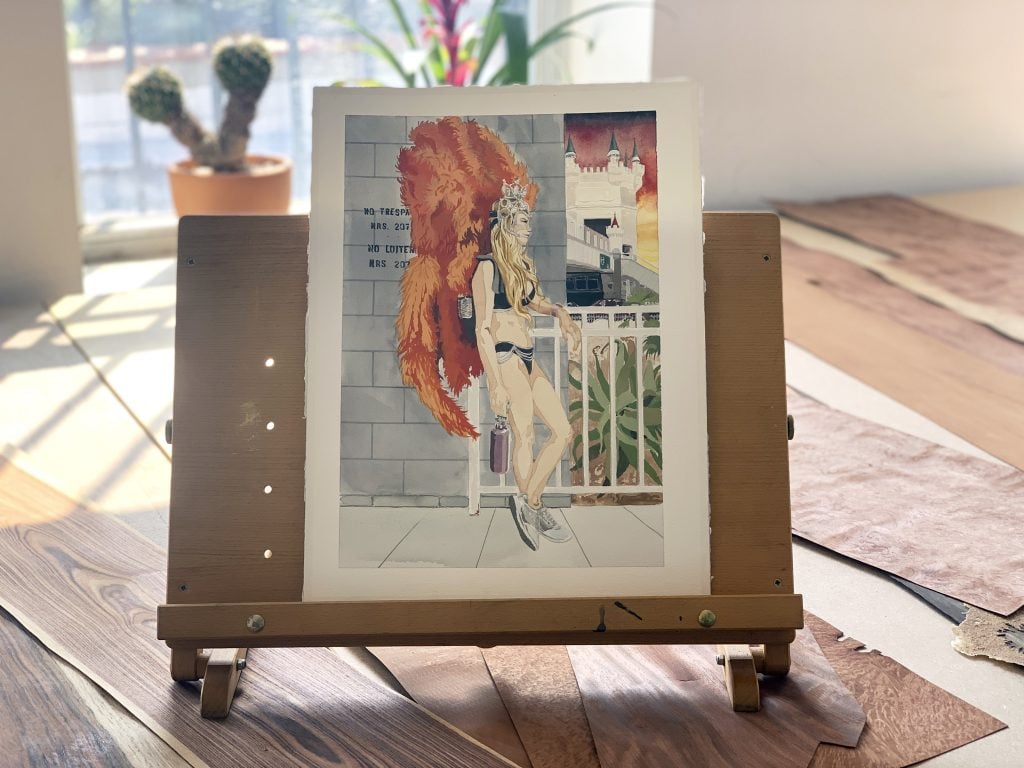
Photo: Vincent Dilio, courtesy of Alison Elizabeth Taylor.
When you feel stuck in the studio, what do you do to get un-stuck?
I engage in productive procrastination—cleaning the studio, flattening wood, sorting veneer scraps, priming paper for paint. I’ve been trying to think of ways to get to a zero-waste studio, which is probably impossible. But sometimes this leads to serious procrastination, like attempting to make paint out of ground waste, crumpling bits of wood into compostable crumbs. Other times I’ll just go on an epic walk around Brooklyn. I try not to use alcohol to deal with these periods anymore.
What is the last exhibition you saw (virtual or otherwise) that made an impression on you?
Lately, I can’t stop thinking about Greer Lankton’s installation at the Mattress Factory in Pittsburgh. I’ve only seen images online, but look forward to seeing it in person.
If you had to put together a mood board, what would be on it right now?
A cool pond in the forest—it’s super hot in NYC today—a utopian community that worked, globe thistles, and blueberry scones that are soft.
Alison Elizabeth Taylor’s “Future Promise” is on view at James Cohan Gallery, 48 Walker Street, New York, September 10–October 23, 2021.
